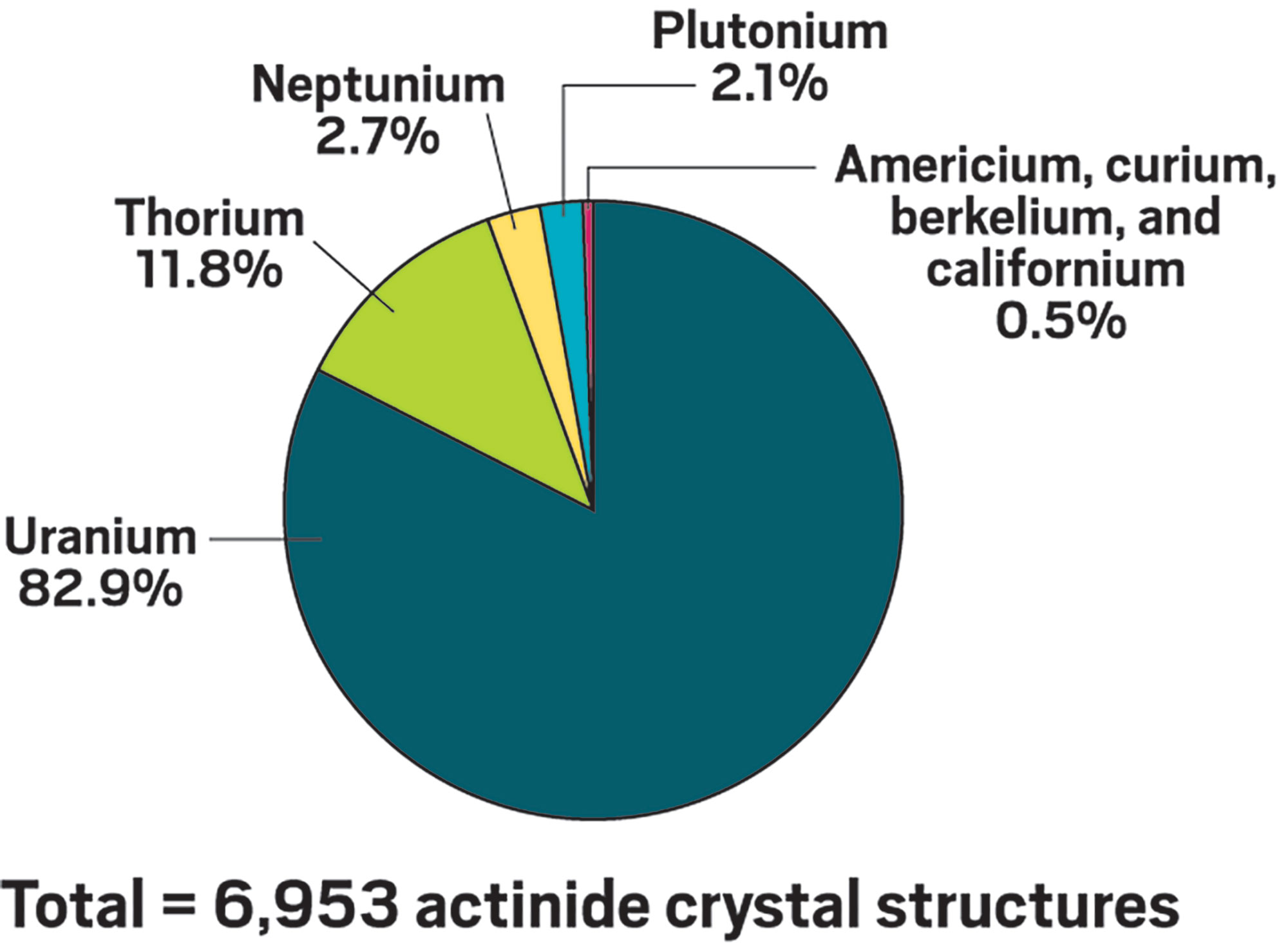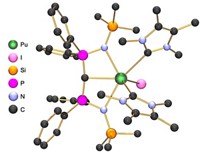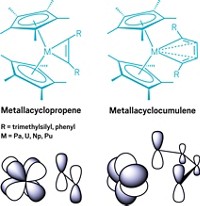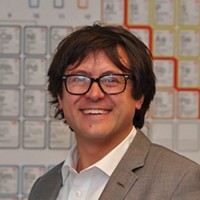Advertisement
Grab your lab coat. Let's get started
Welcome!
Welcome!
Create an account below to get 6 C&EN articles per month, receive newsletters and more - all free.
It seems this is your first time logging in online. Please enter the following information to continue.
As an ACS member you automatically get access to this site. All we need is few more details to create your reading experience.
Not you? Sign in with a different account.
Not you? Sign in with a different account.
ERROR 1
ERROR 1
ERROR 2
ERROR 2
ERROR 2
ERROR 2
ERROR 2
Password and Confirm password must match.
If you have an ACS member number, please enter it here so we can link this account to your membership. (optional)
ERROR 2
ACS values your privacy. By submitting your information, you are gaining access to C&EN and subscribing to our weekly newsletter. We use the information you provide to make your reading experience better, and we will never sell your data to third party members.
Periodic Table
Chemists explore the periodic table’s actinide frontier
Investigations of the table’s shadowy realms are enjoying a renaissance
by Mark Peplow, special to C&EN
March 4, 2019
| A version of this story appeared in
Volume 97, Issue 9

Oct. 11, 1939. Europe is at war, and US president Franklin D. Roosevelt has just received a fateful letter from Albert Einstein. Noting that “the element uranium may be turned into a new and important source of energy in the immediate future,” Einstein adds, “it is conceivable . . . that extremely powerful bombs of a new type may thus be constructed.” The letter spurred government action that ultimately led to the Manhattan Project and the dawn of the nuclear age.
When Einstein wrote that message, uranium was the heaviest known element and sat immediately below tungsten in the periodic table. It didn’t hold either position for long. In early 1940, researchers at the University of California, Berkeley, used their new cyclotron particle accelerator to slam neutrons into a uranium-238 target, creating a heavier element they named neptunium. By switching from neutrons to deuterium nuclei, the scientists produced plutonium later that year; americium and curium followed in 1944, prompting Glenn T. Seaborg to shift the periodic table’s basement down a level to accommodate the growing family of synthetic elements. By the 1960s, nuclear alchemists had completed the full set of 15, from actinium to lawrencium. The actinides had arrived.
After the Promethean thrill of creating these elements, researchers knuckled down to understand their chemistry. It was no mean task: every single actinide isotope is radioactive, and most of them are vanishingly rare. But by the end of the 20th century, there was a widespread view that actinide chemistry was a dying field, says Thomas E. Albrecht-Schmitt of Florida State University. Thorium and uranium had been thoroughly studied, the exotic heavier actinides appeared boringly similar to lanthanides, and chemists were losing interest. In the wake of reactor accidents such as Chernobyl, the future of nuclear power looked uncertain, and actinide research programs languished, says Jenifer C. Shafer at the Colorado School of Mines.
Meet the actinides

a Elemental oxidation state (0) not included.
Now, a remarkable actinide renaissance is in full swing. “There has been large growth throughout academia and substantial reinvestment at the national laboratories in the US,” Albrecht-Schmitt says. Other countries, including the UK, China, and Russia, also have healthy actinide research communities, he adds: “I would say it has completely turned around.”
This resurgence is partly due to a greater recognition that nuclear power can help curb climate-changing carbon emissions, Shafer says. Understanding the chemistry of uranium, plutonium, and other actinides is crucial for improving how the world handles nuclear waste. But research topics vary as scientists march across the actinide row. Lighter elements like actinium and thorium have burgeoning medical uses, while those in the middle of the series have a much more complex and varied chemistry than researchers once thought. And sensitive spectroscopy methods, microscale synthesis techniques, and the growth of computing power for theoretical studies are helping researchers push deeper into exploring the shadowy realms toward the end of the series.
National labs have restarted their production of rare actinide isotopes to meet growing demand from chemists. “For the first time in more than two decades, there is competition for these isotopes,” Albrecht-Schmitt says.
Doctor actinide will see you now
Stosh A. Kozimor at Los Alamos National Laboratory says that one of the field’s most important research themes is the use of actinide radiopharmaceuticals to treat cancer and other diseases. Known as targeted α therapy, it involves coupling an actinide to a targeting agent—such as an antibody or a protein—that locks onto specific cells in the body and kills them with the α particles emitted by the isotopes. α Particles consist of two neutrons and two protons bound together.
Chemical imbalance

Note: Data as of Feb. 9, 2017.
Actinium-225 is particularly well suited to the job. Its α particles travel for only 100 µm or less in the body, minimizing off-target effects. Its decay products also emit α particles, so one 225Ac atom actually delivers a total of four α particles. And with a half-life of 10 days, it sticks around long enough for chemists to prepare radiopharmaceutical complexes while avoiding long-term radiation exposure for the patient.
Actinium Pharmaceuticals is leading the charge with several 225Ac drug candidates. Actimab-A is currently in a Phase II trial, for example, and uses the antibody lintuzumab to target acute myeloid leukemia cells. The antibody is attached to 225Ac3+ via a chelator called DOTA, a ring-shaped molecule that uses its nitrogen and oxygen atoms to bind the actinium ion at eight coordination sites. Other researchers, including Kozimor, are working on alternative chelators that keep a stronger hold on 225Ac3+ once inside the patient to maximize the isotope’s impact on tumor cells.
Another promising isotope for targeted α therapy is thorium-227, with a half-life of 18.7 days. Last year, Rebecca J. Abergel at Lawrence Berkeley National Laboratory and pharmaceutical company Bayer unveiled a therapeutic agent consisting of a 227Th4+ chelator based on four hydroxypyridinone (HOPO) groups and an antibody called epratuzumab that targets certain white blood cells (Inorg. Chem. 2018, DOI: 10.1021/acs.inorgchem.8b02430).
If targeted α therapy takes off, clinicians will need a better supply of the isotopes. Most of the world’s 225Ac is extracted from 229Th decay products at Oak Ridge National Laboratory (ORNL), and current global capacity could serve only a few hundred patients each year. ORNL is working with other national labs to develop an alternative production method, based on bombarding a 232Th target with high-energy protons. TRIUMF, Canada’s national particle accelerator center, is also pursuing this route. “I’m really excited about the emergence of actinides for medical applications,” Kozimor says. “It has the potential to dramatically impact people’s lives.”
A nuclear family
Despite their forays into the clinic, actinides are intractably linked with nuclear power and nuclear weapons. Actinide chemistry underpins nuclear fuel recycling and nuclear waste management; it is also vital in cleaning up the environmental damage left by poorly managed Cold War–era nuclear sites. “For decades we didn’t study these elements enough,” says Polly L. Arnold at the University of Edinburgh. “We need to know more about them to look after our waste legacy.”
One waste species that chemists want to get a better handle on is the uranyl ion [UVIO2]2+. Formed from uranium in radioactive waste and mine tailings, it is highly soluble in water and spreads easily through the environment. Chemists have two principal strategies to stop uranyl in its tracks, says Suzanne C. Bart at Purdue University. They can reduce uranium from its soluble +6 oxidation state to the less-soluble +5 or +4 states, forcing it to precipitate; and they can break uranyl’s strong uranium-oxygen bonds.
Bart has achieved both of these feats using iminoquinone ligands that readily change their own oxidation states. When bound to [UO2]2+, the ligands help reagents such as acyl chlorides break into the uranium-oxygen bond, ultimately replacing oxygen with chloride ligands and reducing UVI to UIV in the process (J. Am. Chem. Soc. 2018, DOI: 10.1021/jacs.8b11302). “Uranyl generally doesn’t do a lot of redox chemistry,” Bart says. “But we found that if you load up the ligands with electrons, all the redox chemistry happens at the ligands and you can break the uranyl bonds completely.”

Lawrence Berkeley National Lab’s Abergel says that in the wake of the terrorist attacks on Sept. 11, 2001, concerns about a dirty-bomb attack have led researchers to work on a wide range of other decontamination strategies, including ligands that could sequester radioisotopes from the human body. Her team has spent the past decade developing nontoxic HOPO-based chelators that bind to ions such as [UO2]+2, Pu4+, and Cm3+. In tests on mice, these ligands enable excretion of the radioisotopes from the body. “We’ve manufactured an oral formulation that is ready to go into Phase I clinical trials, and we’re currently waiting for funding to start the trial, hopefully this year,” Abergel says.
Advertisement
In addition to helping sequester actinides in the body, ligands play a crucial role in reprocessing nuclear fuel. The standard method uses the ligand tributyl phosphate to form complexes with uranium and plutonium, which are then isolated through a series of extractions between organic and aqueous phases. Known as the PUREX process, the technique can provide enough fresh 235U and 239Pu to squeeze 25–30% extra energy from the original uranium in a fuel rod. “You can extend the lifetime of usable fissile material for a long, long time,” says Melissa Denecke, who has just become division director for physical and chemical science at the International Atomic Energy Agency.
But PUREX also generates a lot of highly radioactive liquid waste containing a smorgasbord of other actinides and lanthanides. Any waste that includes 237Np, for example, which has a 2-million-year half-life, poses a long-term problem. So researchers are developing other ligands to manipulate the solubility and oxidation states of these actinides, which could eventually help separate them and reduce the burden on waste repositories.
Covalent surprises
As researchers progress along the actinide row toward increasing atomic masses, their journey becomes increasingly arduous. Beyond curium, researchers quickly reach the final frontier of what one might call normal chemistry. “Californium is the last element you’ll ever get a milligram of,” Albrecht-Schmitt says. “And einsteinium is the last element you’ll ever grow a crystal from.”
Despite these challenges, researchers are using the midactinides to investigate fundamental chemical trends in the series. In general, early actinides, like uranium, neptunium, and plutonium, behave more like transition metals than like the lanthanides above them: they can access a wider variety of oxidation states and are able to form somewhat covalent bonds with their ligands. In contrast, later actinides tend to act much more like lanthanides, preferring +3 or +2 oxidation states and eschewing covalency.
The big question is, Whereabouts in the series does one behavior segue into the other? If ligands could be used to exploit or even shift that turning point, it might offer a valuable strategy for separating actinides from their lanthanide counterparts— for instance, in used fuel. “It’s probably the single most discussed topic in the literature,” Albrecht-Schmitt says.
Several competing factors underlie the actinides’ bonding trends. For example, as the positive charge of the nucleus increases across the series, it pulls ever harder on the outlying 5f orbital. This gradually lowers the orbital’s energy and stabilizes the +3 oxidation state.
But the immense nuclear charge also delivers a relativistic surprise. The atom’s innermost electrons travel so fast that they approach the speed of light and gain mass. This causes certain s and p orbitals to contract, which increases their shielding of the nuclear charge. That loosens the nucleus’s hold on the outermost electrons, allowing 5f and 6d orbitals to expand a little. The upshot is that these orbitals can sometimes extend far enough to mix with ligand orbitals, allowing a degree of covalent bonding. In some cases that may amount to just a few percent of what is largely an ionic interaction—think of it as a “covalent assist”—but it could be enough to tip the scales in a finely balanced separation process.
Over the past few years, researchers have found that some ligands can encourage covalency in late actinides. For example, Albrecht-Schmitt has made californium(III) complexes with polyborate (Nat. Chem. 2014, DOI: 10.1038/nchem.1896) and dipicolinate ligands (Nat. Commun. 2015, DOI: 10.1038/ncomms7827) that showed signs of covalency in their bonds.
But berkelium posed an obvious gap in these studies. Most of the world’s supply of berkelium is allocated to the targets used to synthesize superheavy elements, and it is also harder to make in a nuclear reactor than californium, leaving little berkelium for chemists to experiment with. A few years ago, though, Albrecht-Schmitt and Shafer managed to get 13 mg of 249Bk from ORNL. “That was the largest sample of berkelium that had been released for chemical investigation in at least 30 years,” Shafer says. They used it to make dipicolinate and borate complexes, producing the first-ever single-crystal structures of BkIII compounds (Science2016, DOI: 10.1126/science.aaf3762).

Filling the berkelium gap allowed Shafer to directly compare the americium, curium, berkelium, and californium dipicolinates (J. Am. Chem. Soc. 2017, DOI: 10.1021/jacs.7b03251). “The trend we saw was that the binding of dipicolinic acid with californium and berkelium was stronger than with americium and curium,” she says. In other words, the two heavier actinides get a greater covalent assist than the lighter pair.
This is because the degree of covalency isn’t determined only by how much an actinide’s 5f orbitals are spread out, explains Shafer—it also depends on how well the energies of the metal and ligand orbitals match up. Understanding how all these effects shape actinide complexes should help chemists be more strategic in designing ligands that can snatch them from complicated mixtures of other elements.
Ephemeral elements
After einsteinium, actinide chemistry hits a whole new level of impossible. Fermium can be produced only in nanogram quantities, and its longest-lived isotope, 257Fm, has a half-life of 100 days. Mendelevium, nobelium, and lawrencium are progressively more elusive. Doing chemistry with such imperceptible amounts of material becomes extraordinarily difficult at this end of the periodic table.
But in 2015, researchers at the Japan Atomic Energy Agency (JAEA) finally managed to measure lawrencium’s first ionization energy. By firing boron-11 at a 249Cf target, they produced a few thousand atoms of 256Lr, with a half-life of just 27 s. This was long enough to funnel the atoms onto hot tantalum, where they lost an electron. The researchers measured how many ions of 256Lr+ were created in this way to calculate the element’s ionization energy (Nature 2015, DOI: 10.1038/nature14342). At 4.96 eV, it is the lowest of all actinides and lanthanides because of strong relativistic shielding that makes it easier to pluck off lawrencium’s weakly bound 7p electron.
The JAEA team then used the same technique to measure the first ionization energies of fermium, mendelevium, and nobelium, using short-lived isotopes that lasted no more than a few minutes (J. Am. Chem. Soc. 2018, DOI: 10.1021/jacs.8b09068). This research confirmed that the first ionization energy gradually increases with rising nuclear charge across the series, right up to nobelium with its fully filled 5f orbital, before plummeting at lawrencium. “I was surprised by how close our experimental values were to predictions from over 40 years ago,” says team member Tetsuya K. Sato at JAEA.
While researchers push experimental actinide chemistry to the limits, theoretical chemistry is playing an ever-more-important role. Working on theoretical models of actinide complexes is certainly cheaper and safer than handling the real stuff. But more accurate computational models of the bonding between metal ions and ligands are also helping guide experimentalists toward synthetic targets, says Valérie Vallet, a theoretical chemist at the University of Lille.
One of the next big challenges for theorists, Vallet says, is to accurately model larger systems, such as how uranium nanoparticles adsorb to clay. That will take more computing power and better theoretical models. “I guess it’s going to take another 10 or 20 years before we can do that accurately,” she says. “There is still a gap between what we model in the computer and what is measured experimentally.” For now, experimental actinide wranglers still have plenty of work to do in the lab.
Mark Peplow is a freelance science writer based in the UK.






Join the conversation
Contact the reporter
Submit a Letter to the Editor for publication
Engage with us on Twitter